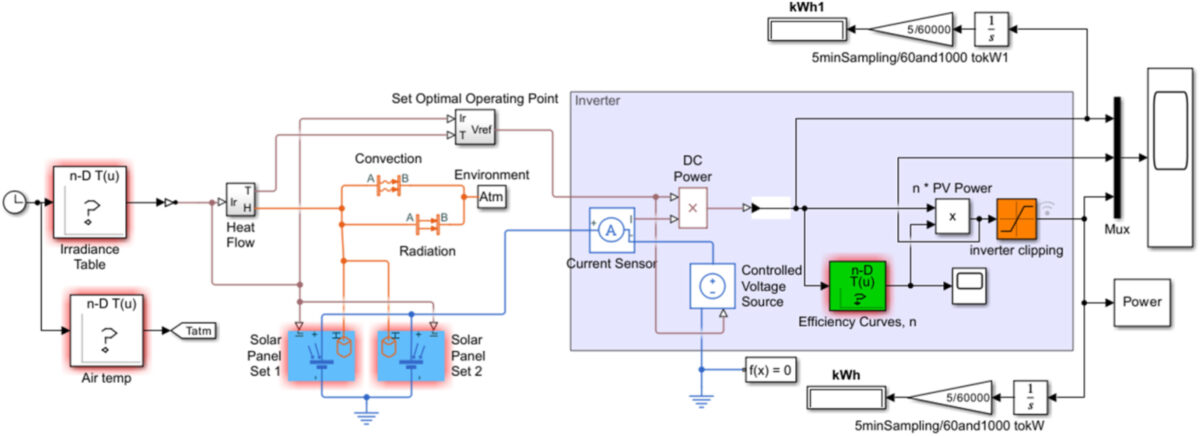Researchers at the Universiti Teknikal Malaysia Melaka have outlined a techno-economic optimization approach to define the appropriate power sizing ratio (PSR) for inverters used in grid-connected PV systems.
The PSR is the ratio of the inverter’s rated power to the total rated power of the connected PV modules and is crucial to maximizing energy yield and income. “An undersized inverter limits the system’s ability to convert all the generated DC power to AC power, leading to potential energy losses,” the scientists explained. “Conversely, an oversized inverter incurs higher initial costs without a proportional increase in energy production.”
The proposed methodology uses a pattern search algorithm (PSA), which is an optimization technique commonly utilized for problems with complex relationships and potentially noisy data, to ensure an accurate representation of real-world inverter behavior.
The model considers radiation, convection thermal representations, and real-world weather data. It also takes into account data from the inverters’ datasheets to evaluate the efficiency curve of the devices. From this curve, it then extracts key points to identify efficiency values between the chosen data points.
“The model undergoes a calibration phase where the efficiency curve points are iteratively adjusted by the PSA until the estimated/modeled values closely match the actual measurements obtained from the real system over a predefined period,” the group explained. “This calibration step guarantees that the model accurately reflects the real-world performance of the system.”
According to the scientists, the model can estimate the annual power yield of a solar array for each iteration step through various DC/AC power ratios, which in turn allows PV system owners to find the optimized ratio that maximizes energy production.
They also warned that the proper selection of the optimal PSR needs to be complemented by economic considerations relating to inverter costs, operation and maintenance, inverter complexity, and monitoring systems. “It’s important to note that the cost function doesn’t directly represent monetary value but rather a relative measure of economic performance,” they stressed. “The actual economic feasibility would depend on specific system costs and electricity prices.”
The novel methodology was presented in the study “Techno-economic optimization of photovoltaic (PV)-inverter power sizing ratio for grid-connected PV systems,” published in Results in Engineering.
“Future research directions involve exploring the integration of additional factors into the model,” the research team concluded. “These factors could include advanced weather forecasting capabilities, dynamic pricing schemes, and potential application to different types of PV systems or even broader renewable energy systems.”
This content is protected by copyright and may not be reused. If you want to cooperate with us and would like to reuse some of our content, please contact: editors@pv-magazine.com.









By submitting this form you agree to pv magazine using your data for the purposes of publishing your comment.
Your personal data will only be disclosed or otherwise transmitted to third parties for the purposes of spam filtering or if this is necessary for technical maintenance of the website. Any other transfer to third parties will not take place unless this is justified on the basis of applicable data protection regulations or if pv magazine is legally obliged to do so.
You may revoke this consent at any time with effect for the future, in which case your personal data will be deleted immediately. Otherwise, your data will be deleted if pv magazine has processed your request or the purpose of data storage is fulfilled.
Further information on data privacy can be found in our Data Protection Policy.